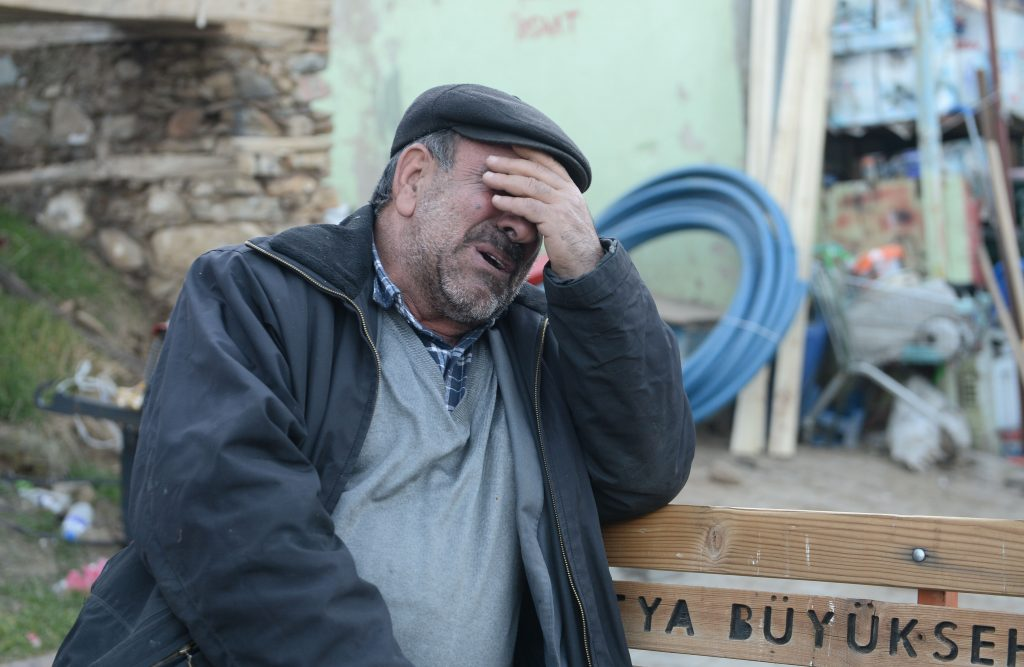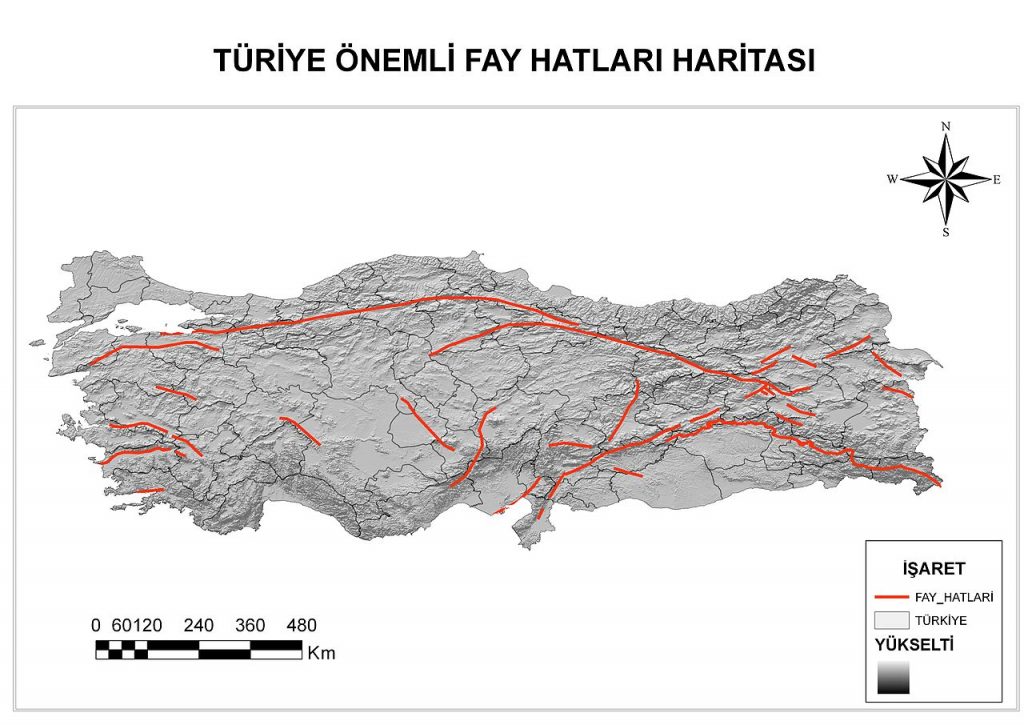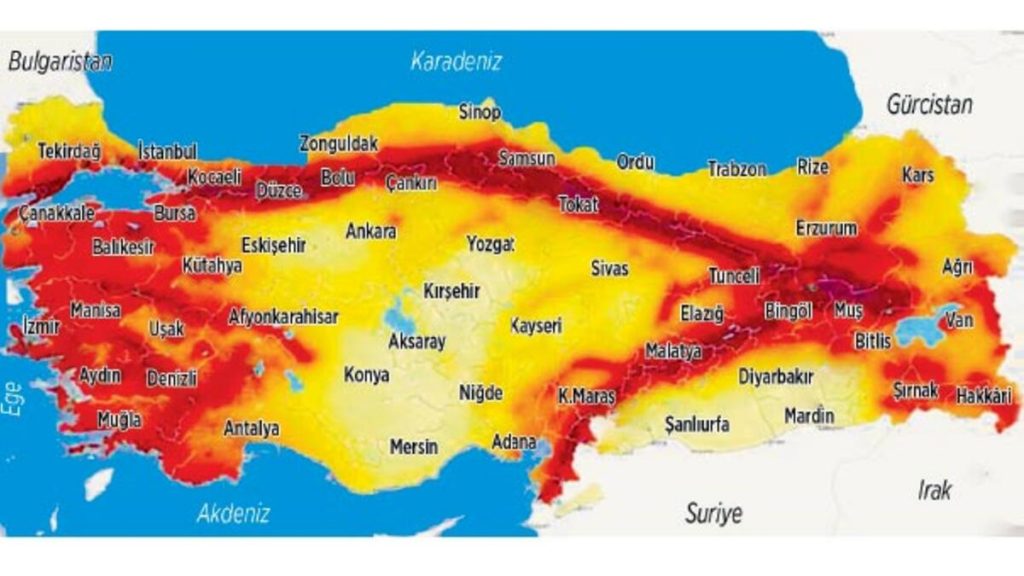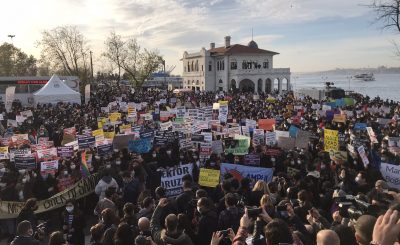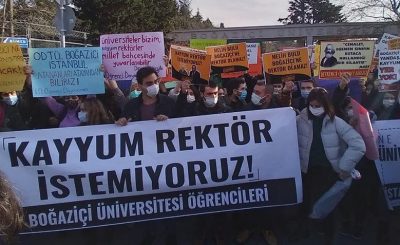On Friday (January 24th), an earthquake with the epicenter of the city of Sivirce, Elazığ Province, eastern Turkey (northern Kurdistan), with a magnitude of 6.8 on the Richter scale, hits not only parts of Turkey but parts of other countries in the region: Armenia, Georgia, Syria, Iraq and Iran.
The number of casualties and injuries in the earthquake continues to grow, and at the time of writing this article, there are: 39 dead, 45 people were rescued from the debris of the buildings destroyed by the earthquake on Friday night. According to the information available to date(January 27th), 15,000 local residents and homeless people have been accommodated in tents, schools and sports halls. In general, information on casualties and injuries has been quite controversial, with various opposition groups criticizing fascist oligarchy that it is trying to cover up the actual death toll and casualties after earthquake. It is also unclear how many buildings were completely destroyed in the earthquake, and how many buildings were significantly or less affected by the events of January 24, which will probably be made clear at a later stage.
In addition to the province of Elazig, devastation and casualties have also been reported in the neighboring Malatya province. According to the latest information, 5 people lost their lifes there.
“We warned, but no one listened to us!”
Shortly after the news of the earthquake became public, a record of a broadcast on CNN Turk, featuring Professor Dr. Naci Görür, aired on October 6, 2019, became popular on social media. In the broadcast, he states: “For a long time the fault line in East Anatolia has been quiet. I’m afraid it will prove fatal, as will the rift in northern Anatolia. ”
Following the earthquake, Professor Görür made the following posts in his Twitter profile:
“Friends, because of the fact that I am from Elazig, I held conferences on the seismic danger in the Elazig region for a long time, I warned the competent institutions, I told them to take measures against earthquake in Elazig and the surrounding rural area. Whole books were published on the subject, but no one did anything, just like in Istanbul. But my colleagues and I were not satisfied with this, together with my fellow professor Namik Cagtay and colleagues from the Istanbul Technical University (Istanbul Teknik Üniversitesi), we organized meetings with the mayors and governors of Bingol, Elazgi, Malatya and Maras as well as representatives of universities in these cities. We have prepared a project in this regard together with specialists from the General Cartography Directorate (Harita Genel Komutanlığı ) from the General Staff of the Turkish Army. We have made applications to the Council for Scientific and Technological Research in Turkey (TÜBİTAK), the State Planning Organization (Devlet Planlama Teşkilatı ) part of the Council of Ministers (the organization was closed in 2011;), But all our attempts were unsuccessful, they didn’t want to hear us. It is clear to any rational minded person that sooner or later an earthquake will occur along a fault line. Does anyone know why before the earthquake in these areas along the fault lines are not taken the necessary measures? ”
“Unfortunately, an earthquake with a magnitude of 6.5 on the Richter scale occurred in Elazig. The epicenter of the earthquake was 25-30 kilometers east of the city of Elazig, in the town of Sivrice. The quake happened along the eastern Anatolian fault line. This fault line is 600 km long and has a east direction. I will present in a few points the information about this earthquake and this fault line.
1-At the site of this earthquake in 1874 there is a quake with a magnitude of 7.1, in 1875 there is a quake of 6.7 on Richter.
2-Following the current earthquake, attention should be paid to the area between the cities of Sivrice-Bingol and Sivrice-Puturge-Celikhan.
3- The building stock in rural settlements in the area affected by the earthquake is quite vulnerable to earthquake accuracy and is unstable. For this reason, there may be major damage. I hope there are not many casualties. As the rescue teams have not reached the villages so far, no accurate and clear assessment of the damage to the buildings can be made.
4- In my opinion, this earthquake is quite disturbing. The fault line in eastern Anatolia had been quiet for a long time. Now it woke up. I’m afraid it will show itself as a fault line in northern Anatolia. As you know, this fault line drained most of its energy during 20th century, in the period between 1939-1999, with quite a few earthquakes with a magnitude of 7 and over Richter scale on it, with the exception of Istanbul area.
The same thing, in my opinion, can be expected from the fault line in Eastern Anatolia. Earthquakes occurred along this line, such as: the region of the city of Marash 7.4 in 1513, 7.5 in 1872 in the Amanos Mountains (on the border with Syria), In the region between the cities of Sivrice and Palu 6.7 in the 1875, again in the same year in the city of Celikhan. As you can see, it’s been a long time since these earthquakes. ”
Where did the earthquake tax money go?
Social media scandal prompted publication of the head of the Turkish Red Crescent (equivalent of Red Cross), Kerem Kinik, who in the first minutes after the news about the earthquake spread on the social network tweeted a short number for donation messages, with which anyone can donate 10 Turkish Lira, or about 1,53 Euro. The outrage of the people in Turkey is not grounded in that the humanitarian organization receives a large part of the amount collected in the form of the “earthquake tax” introduced after the devastating earthquakes in the Marmara Sea region in 1999 in which thousands of people lost their lives. The tax period, which was initially introduced for a period of 1 year in order to spend the money collected to recover the areas affected by the earthquake, was extended in 2002, by Law No 5035 of 25 December 2003, almost a year after the AKP (Erdogan’s ruling party in Turkey) came to power, the tax became permanent and, according to various calculations from 2004 to 2018, the tax collected an impressive total of 60.6 billion Turkish liras, only for the first 7 months of 2019, a total of 3 billion 766 million Turkish Lira was collected.
Based on the data presented in this way, many users on social networks asked the question: Where did the money from the “earthquake tax” go? The government’s response was not too late and Interior Minister Suleyman Soylu on Saturday vowed to launch investigations against all social network users who “create panic and spread false information about the earthquake.” Thus, under the guise of combating “fake news”, the authorities in Turkey, which after the protests of the summer of 2013, are particularly hostile to the social networks, in which very often people express their views on the policies of the fascist oligarchy, and organize various campaigns on different topics again resorted to censorship and silencing critical opinion. On Saturday, news from various sources also appeared for detainees in connection with social media posts, but this information is not clear.
Following these threats of the interior minister, lawyers from the Progressive Lawyers Association (Çağdaş Hukukçular Derneği), announced in their Twitter profile, that they would provide legal assistance to any citizen detained by the police or subjected to threats and repression because of the expressed opinion on social networks about the earthquake and the events that followed it. The lawyers also say that they will made applications to the prosecutor’s office for the post-earthquake racist and xenophobic posts on social networks. This is referring to the popularity of the Google search keyword, “Are there Kurds in Elazig?”, Which is a clear example of the hatred, division, racism and xenophobia, spread by the fascist oligarchy, which have grown especially in the last 4-5 years.
Meanwhile, the small town of Sivrice, in Elazig province, the epicenter of the earthquake, continues to have subsequent earthquakes, with the strongest earthquakes of 5.1, 4.4 and 4.3 magnitude on Richter scale. According to the Observatory at the Seismological Institute, located in Istanbul’s Kandilli neighborhood, the earthquakes in the Elazig region can continue for up to 7 days after the big earthquake. Seismologists warn that more attention should be paid to settlements located at the end points of fault lines accros Anatolia.
“It’s not right to expect for the state to do everything!”
No, there is no mistake. These were the first words pronounced by Turkey’s Energy and Natural Resources Minister Fatih Dönmez. Who else, if not the state, should help after such an event? From whom should the people expect help after an earthquake? Maybe it’s better to start crying, and to call for the woe?
Turkey’s ruling oligarchy, who have built palaces with money stolen from the people and to selling “our and foreign guests” all possible resources of the country for the last nearly 20 years, are plunged into luxury and affluence, of course they would not help with nothing to the people buried beneath the rubble of buildings, most of which were built by construction companies close to the ruling party without any external control over compliance with construction technologies. Due to lack of control, Turkey has become a country with “rotten buildings”, if even in an earthquake, with average power, buildings built just 1 year ago can be demolished, what about the houses that the people built themselves with their own efforts and opportunities. We are not surprised, we have no doubt, that the oligarchy in Turkey have long neglected all moral and ethical norms, the feeling of shame has long been in the past for its bureaucrats. There would be no other way, otherwise they would not have been appointed there to safeguard the interests of the imperialists and the oligarchy.
But as the old saying goes, the replete with food does not believe to the hungry. And so it happened this time. The people themselves are trying to recover their wounds in the literal and figurative sense of these words. And what should the people expect from the state that represents the minister?
Here’s what:
– Price increases
-New and new taxes
– Arrests
– Torture
– Unemployment
-New and new prisons
– Police batons
– Massacres
Let the state continue to send to the areas affected by the earthquake more police and gendarmes may there are “terrorists” who tell the people that the rulers are to blame for the earthquake.
“The aid received has been spread by local ruling party leaders to only their own relatives”
This revelation was made by representatives of the pro-Kurdish Peoples Democratic Party(in Turkish Halkların Demokratik Partisi-HDP), at its press conference on Sunday.
HDP MP – Ayse Adjar Basaran, who was part of a special delegation sent by the party to make on-site inspections in the region affected by the earthquake, said that “In the 60 settlements that we were able to reach most of the aid sent to these place has not been delivered yet. Aid that was already delivered have been distributed by the chairmen of the municipal structures of the ruling party AKP only among their relatives. ”
On Sunday at a press conference, a delegation of the Peoples Democratic Party made up of MPs – Ayse Adjar Basaran, Dilsah Canbaz, Erdal Aydemir, Sevin Coshkun, party co-chairman responsible for the local self-government Salim Kaplan, as well as members of the party, shared their observations from their visits to the towns of Sivrice, Maden and Gezin, as well as the villages in these municipalities located in Elazığ province.
Representatives of the pro-Kurdish party said they had visited a total of 60 settlements, with serious problems in all of them, emphasizing the fact that these problems had not been resolved by the authorities. Salim Kaplan said there was an urgent need for food and tents to accommodate people left homeless after Friday’s earthquake. HDP representatives said there are many public buildings that have been affected by the earthquake and need urgent strengthening in view of the ongoing aftershocks.
“The fascist oligarchy impedes mutual aid and solidarity between the people”
Elazig governor refused to accept 2 heavy trucks sent from Ergani municipality, in Diyarbakir province charged with aid for the victims of the earthquake. Ergani Municipality is under the control of the pro-Kurdish People’s Democratic Party and this is considered to be the main reason for the governor’s office to refuse aid.
On Sunday 2 trucks loaded with food, blankets, diapers, bandages, pocket torches, heaters, water and more, departed from town of Ergani in Diyarbakir district, were stopped by police at the entrance of city of Elazig. Police say they received an order from the local governor not to allow trucks with aid from other institutions, except those from the Red Crescent and the State Disaster Response and Emergency Management Agency (AFAD).
Although there are hundreds of people in the towns and villages of the Elazig province who urgently need blankets, food and tents to shelter in, the AKP’s fascist government refuses to allow aid to enter the city. In the first hours after the earthquake, the ruling party’s leaders began to repeat the mantra that “the earthquake should not be used for political purposes.” But the AKP, which turns every action into a political show and PR campaign in its favor, refuses to accept the aid sent because it has no political benefit from it.
“Civil servants struggling against the purges of the fascist oligarchy visit the are affected by the earthquake”
Civil servants, who have been struggling against the purges of fascist oligarchy in Turkey for more than 3 years, started after the coup attempt in the summer of 2016, which united in the Resistance Council in August 2018 which is part of People’s Front-Turkey, visited the Elazig city area on Sunday. According to the information provided by the council members, the aid intended for the local population is not given to the people, instead the regional and municipal leaders of the ruling party give them to their relatives and friends. People affected by the earthquake need tents, heaters and food. One of the members of the Resistance Council, a doctor purged by the government, conducted free health examinations of children in the area visited by members of the Resistance Council.
This is how the picture now appears to be, in the region affected by the 6.8 magnitude earthquake on the Richter scale of 24 January 2020. Of course, there is much more to say, but we hope that is enough for now.
Source: This article was based on materials published on the Gerçek news agency website gercekhaberajansi.org

